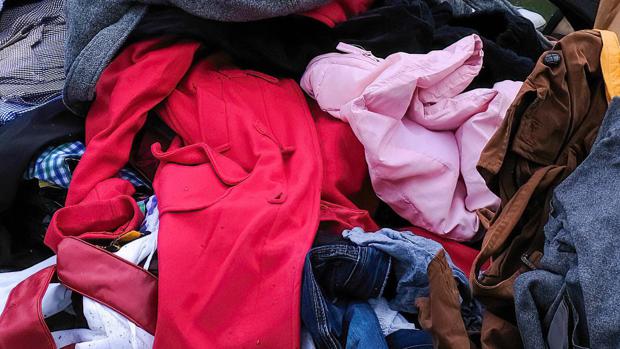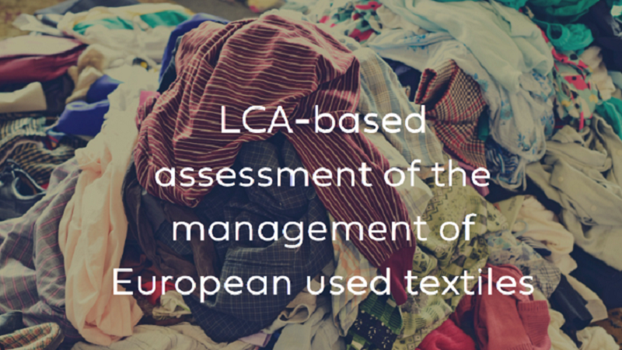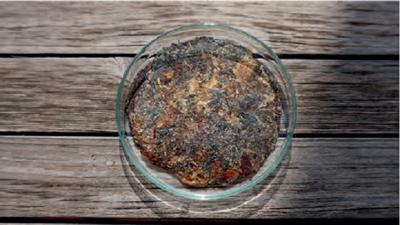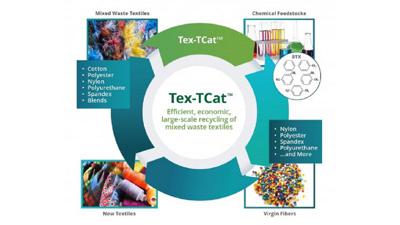EuRIC

(Source: imago)
The quantities of used textiles collected in Europe are increasing, while the proportion of high-quality reusable garments is decreasing. Towards 2030, the amount of separately collected textiles might reach 8.5-9 million tons. Currently, around 50-75 % of the collected textiles are reused, whereas 10-30 % is recycled.
Towards 2030 however, it is expected that a smaller portion will be suitable for reuse, and that more will be fit for recycling. This is because the requirement of separately collected textiles is expected to divert textiles from mixed waste which are likely not fit for reuse, as well as a general trend of falling quality.
The study “LCA-based assessment of the management of European used textiles” published by EuRIC Textiles, Brussels/Belgium, provides a qualitative overview of the market surrounding used textiles both in Europe and globally. This includes a presentation of current and future collection and sorting practices in Europe, the share and fate of various qualities, including both reuse and recycling, and projected volumes, fates and composition of collected textiles post 2025. Then, the two comparative lifecycle assessments are presented.
Today, the premium quality clothing textiles, called “crème”, constitute around 5 % of the total collected volume, and are sold to the Western European markets. The remining reusable textiles are sold to wholesalers for detailed sorting and are then exported on the global market. Second-grade textiles (also called “B-grade”) are typically sold to Eastern Europe and the Middle East, the lowest qualities are sold to Asian markets, and a special grade called “Tropical mix” (lightweight garments) are often sold to sub-Saharan Africa.
The part which is not considered reusable is sent for recycling, and the same is suspected to happen to a large portion of the lowest qualities. Mostly, recycling signifies mechanical recycling into industry wipes, bedding, or insulation products, but mechanical recycling can also be used to produce new yarn, a process termed “fiber-to-fiber” recycling. There is a mature and growing industry of mechanical recyclers, but there are challenges in terms of specific feedstock-requirements and that for each recycling round, the fibers are shortened and will ultimately not create strong enough yarn. New technologies using chemical processes to extract valuable components to produce new fibers are arising and are expected to speed-up the fiber-to-fiber recycling in the coming years.
The EU Strategy for Sustainable Textiles aims to strengthen both reuse and recycling in Europe, according to the waste hierarchy which clearly states that reuse should be prioritized over recycling, even when the reuse occurs in other global regions. However, as the portion of non-reusable garments is expected to increase and the field and capacity of the textile recycling sector in Europe is rapidly changing, this study has investigated through 2 comparative LCA’s 1) The environmental benefit of reuse compared to a new product and 2) The environmental impact of reuse globally compared to recycling within the EU.
The lifecycle impact assessment of reuse compared to a new product confirms that the environmental impact of reuse is significantly lower than the production of a new garment, for all 3 qualities. For both the crème and the B-grade t-shirt, the new garment is responsible for almost 70 times more overall environmental impact than a reused t-shirt, and in terms of CO2 -equivalents, the reuse of both types of garments saves more than 3 kg CO2. The impact from a new garment primarily comes from the production of fibers as well as the production in itself, whereas the little impact connected with reuse comes from transportation to point of sales. But the latter is comparably trivial to the impact of the production of a new garment, that the study supports the existence of a global market for reuse, despite the connected transportation.
The lifecycle impact assessment of reuse compared to recycling in Europe, shows that reuse avoids more than recycling, and is therefore environmentally beneficial for all 3 qualities. However, if the reuse does not to a large degree replace the production of new garments, recycling can be slightly more environmentally beneficial.
You can find the complete study here.

The study “LCA-based assessment of the management of European used textiles” published by EuRIC Textiles, Brussels/Belgium, provides a qualitative overview of the market surrounding used textiles both in Europe and globally. This includes a presentation of current and future collection and sorting practices in Europe, the share and fate of various qualities, including both reuse and recycling, and projected volumes, fates and composition of collected textiles post 2025. Then, the two comparative lifecycle assessments are presented.
Today, the premium quality clothing textiles, called “crème”, constitute around 5 % of the total collected volume, and are sold to the Western European markets. The remining reusable textiles are sold to wholesalers for detailed sorting and are then exported on the global market. Second-grade textiles (also called “B-grade”) are typically sold to Eastern Europe and the Middle East, the lowest qualities are sold to Asian markets, and a special grade called “Tropical mix” (lightweight garments) are often sold to sub-Saharan Africa.
The part which is not considered reusable is sent for recycling, and the same is suspected to happen to a large portion of the lowest qualities. Mostly, recycling signifies mechanical recycling into industry wipes, bedding, or insulation products, but mechanical recycling can also be used to produce new yarn, a process termed “fiber-to-fiber” recycling. There is a mature and growing industry of mechanical recyclers, but there are challenges in terms of specific feedstock-requirements and that for each recycling round, the fibers are shortened and will ultimately not create strong enough yarn. New technologies using chemical processes to extract valuable components to produce new fibers are arising and are expected to speed-up the fiber-to-fiber recycling in the coming years.
The EU Strategy for Sustainable Textiles aims to strengthen both reuse and recycling in Europe, according to the waste hierarchy which clearly states that reuse should be prioritized over recycling, even when the reuse occurs in other global regions. However, as the portion of non-reusable garments is expected to increase and the field and capacity of the textile recycling sector in Europe is rapidly changing, this study has investigated through 2 comparative LCA’s 1) The environmental benefit of reuse compared to a new product and 2) The environmental impact of reuse globally compared to recycling within the EU.
The lifecycle impact assessment of reuse compared to a new product confirms that the environmental impact of reuse is significantly lower than the production of a new garment, for all 3 qualities. For both the crème and the B-grade t-shirt, the new garment is responsible for almost 70 times more overall environmental impact than a reused t-shirt, and in terms of CO2 -equivalents, the reuse of both types of garments saves more than 3 kg CO2. The impact from a new garment primarily comes from the production of fibers as well as the production in itself, whereas the little impact connected with reuse comes from transportation to point of sales. But the latter is comparably trivial to the impact of the production of a new garment, that the study supports the existence of a global market for reuse, despite the connected transportation.
The lifecycle impact assessment of reuse compared to recycling in Europe, shows that reuse avoids more than recycling, and is therefore environmentally beneficial for all 3 qualities. However, if the reuse does not to a large degree replace the production of new garments, recycling can be slightly more environmentally beneficial.
You can find the complete study here.

(Source: EuRIC)



